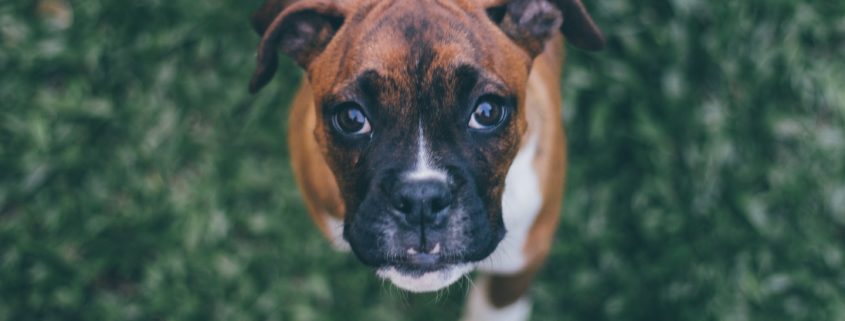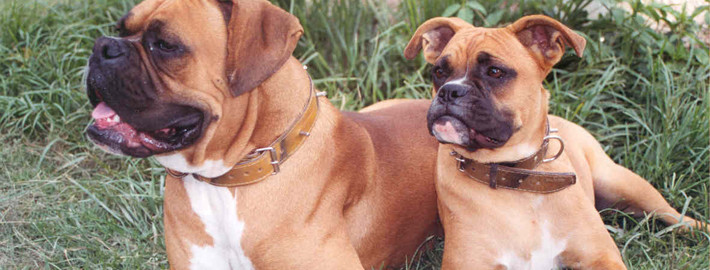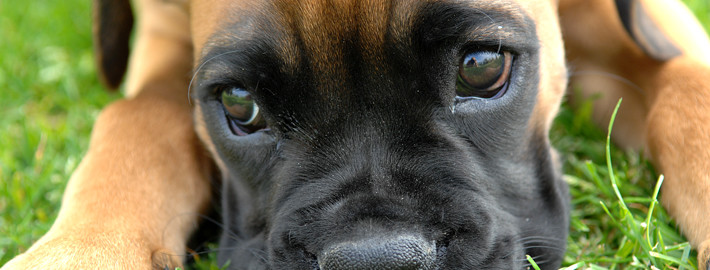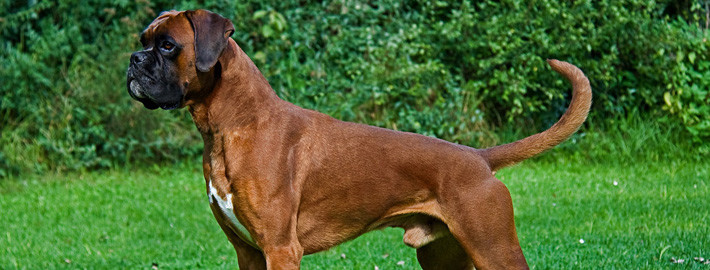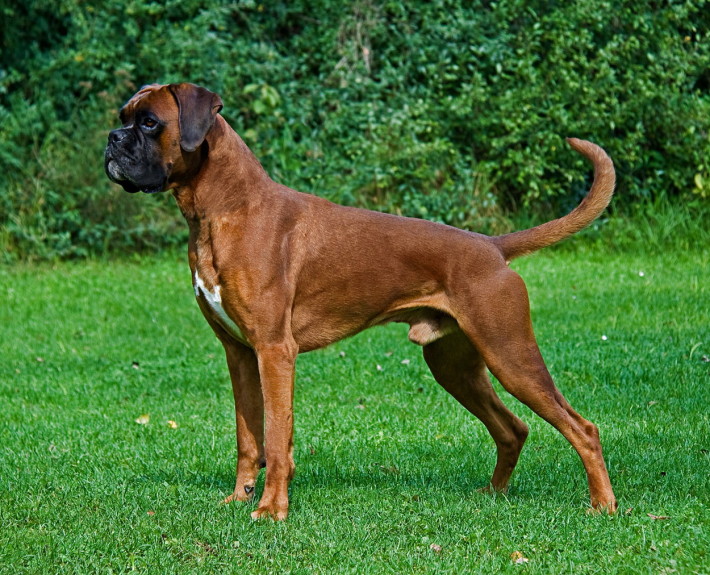What makes the Boxer Unique?
The boxer is exemplary in its combination of stylish elegance with strength and agility. It is square-proportioned with good substance and musculature. Its stride is free and ground-covering, with proud carriage. Its head is distinctive, with a broad, blunt muzzle and alert expression. Its coat is short and shiny. It is perfectly suited to serve as a working watchdog. The boxer is playful, exuberant, inquisitive, attentive, demonstrative, devoted and outgoing; it is a perfect companion for an active family. It can be stubborn, but it is sensitive and responsive to commands. It may be aggressive toward strange dogs, but it is generally good with other household dogs and pets.
Breed Groups
Page Contents
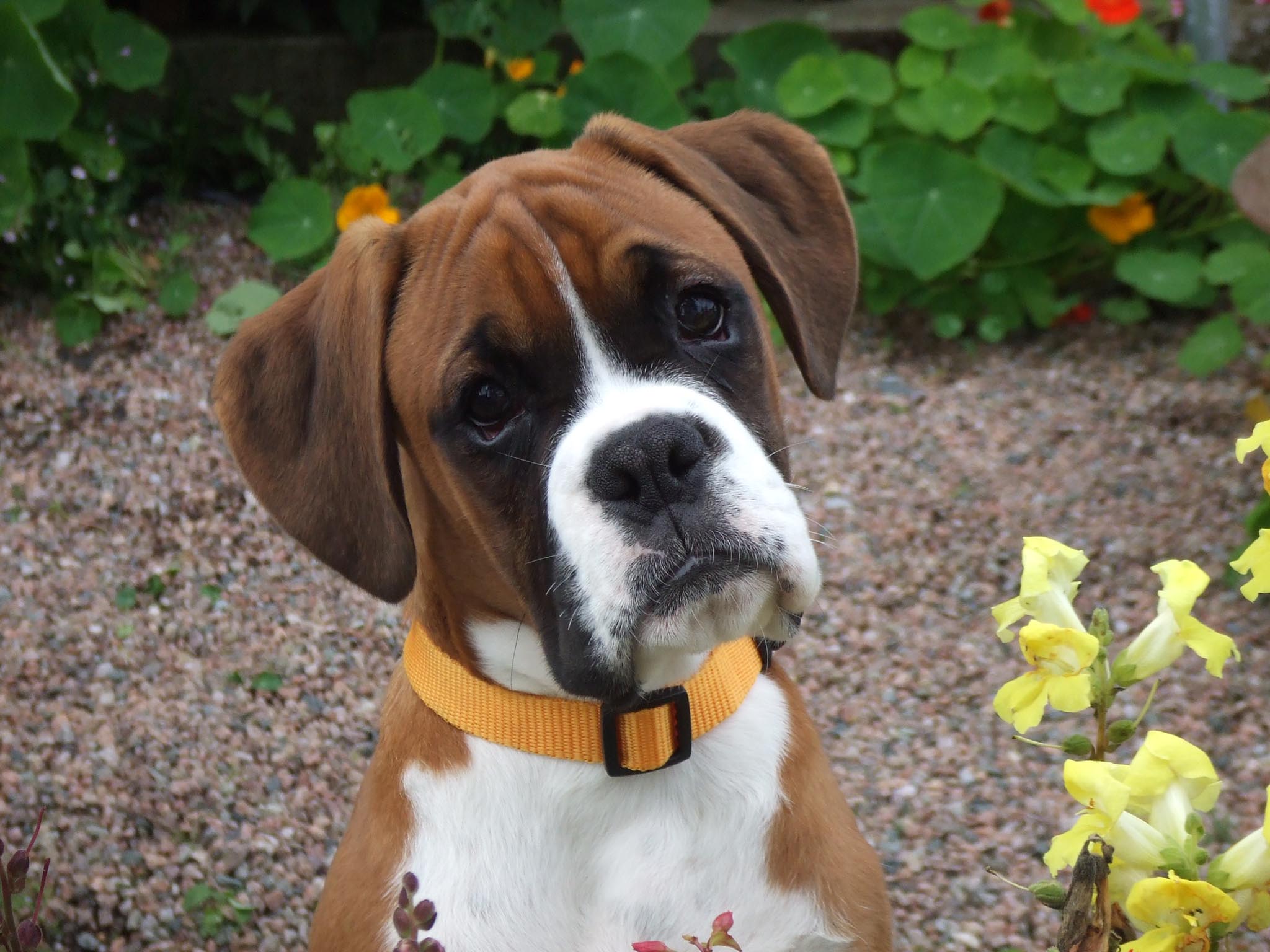
Is the Boxer Right For You?
The boxer is exemplary in its combination of stylish elegance with strength and agility. It is square-proportioned with good substance and musculature. Its stride is free and ground-covering, with proud carriage. Its head is distinctive, with a broad, blunt muzzle and alert expression. Its coat is short and shiny. It is perfectly suited to serve as a working watchdog. Developed in 19th century Germany from German Mastiffs and English Bulldogs, the Boxer was used as a hunting, fighting and working dog, prized for its tenacity, strength and obedience. Later used as cattle dogs, they also made a name for themselves as circus performers. In the early 1900s, the Deutscher Boxer Club established a breed standard for Boxers, and the AKC approved them in 1904
In 5 Words
- Playful
- Devoted
- Bright
- Loyal
- Energetic
Characteristics
Learn About the Boxer
Description
The Boxer’s body is compact and powerful. The head is in proportion with the body. The muzzle is short and blunt with a distinct stop. The nose is large and black with very open nostrils. The jaw has an under bite. The eyes are dark brown. The ears are set high, either cropped or kept natural. When cropped they are trained to stand up on the head, tapering to a point. When left natural the ears are thin, falling forward, laying close to the head. The neck should be round, strong, and muscular, a without dewlap. The muscular, front legs are straight and parallel when viewed from the front. The back legs are well muscled. The tail is set high and usually docked. The AKC severely penalizes a natural tail, while most of Europe has outlawed this practice. Dewclaws are usually removed. The short, smooth, close-fitting coat comes in, fawn, brindle, tan, mahogany, black often with white markings. Boxers also come in a white coat that cannot be registered with some clubs.
Short History of the Boxer
Developed in 19th century Germany from German Mastiffs and English Bulldogs, the Boxer was used as a hunting, fighting and working dog, prized for its tenacity, strength and obedience. Later used as cattle dogs, they also made a name for themselves as circus performers. In the early 1900s, the Deutscher Boxer Club established a breed standard for Boxers, and the AKC approved them in 1904. Decades later, American soldiers brought them home after World War II, and they quickly became popular in the U.S.
Temperament
Boxers may look like imposing figures from afar, but up close and personal they are playful and loving family companions. Often dubbed the Peter Pan of dogs, Boxers are highly energetic, and as they grow into adulthood, they never lose the desire to romp and play like a puppy. Perpetual cuddle bugs, Boxers will try to wriggle into even the smallest spaces possible to get close to the ones they love. They love to be the center of attention and make a sound unique to their breed that some owners call a “Woo Woo.” When they want something they will make this “woo woo” sound to attract an audience.
Protective of their family, Boxers are alert and reliable watchdogs, sounding the alarm that strangers are approaching. Their menacing, muscular appearance will deter anyone whose intent is not above board. Boxers get along well with other pets, including cats and make a loving and loyal addition to any active family.
Caring for Your Boxer
General Health
Leading health issues to which Boxers are prone include cancers, heart conditions such as Aortic Stenosis and Arrhythmogenic Right Ventricular Cardiomyopathy (the so-called “Boxer Cardiomyopathy”), hypothyroidism, hip dysplasia, and degenerative myelopathy and epilepsy; other conditions that may be seen are gastric dilatation and torsion (bloat), intestinal problems, and allergies (although these may be more related to diet than breed).Entropion, a malformation of the eyelid requiring surgical correction, is occasionally seen, and some lines have a tendency toward spondylosis deformans, a fusing of the spine, or dystocia.Other conditions that are less common but occur more often in Boxers than other breeds are hystiocytic ulcerative colitis (sometimes called Boxer colitis), an invasive E. coli infection,[28] and indolent corneal ulcers, often called Boxer eye ulcers.
According to a UK Kennel Club health survey, cancer accounts for 38.5% of Boxer deaths, followed by old age (21.5%), cardiac (6.9%) and gastrointestinal (6.9%) related issues. Average age of death was 9 years and 8 months. Responsible breeders use available tests to screen their breeding stock before breeding, and in some cases throughout the life of the dog, in an attempt to minimize the occurrence of these diseases in future generations.
Boxers are known to be very sensitive to the hypotensive and bradycardiac effects of a commonly-used veterinary sedative, acepromazine. It is recommended that the drug be avoided in the Boxer breed.
As an athletic breed, proper exercise and conditioning is important for the continued health and longevity of the Boxer. Care must be taken not to over-exercise young dogs, as this may damage growing bones; however once mature Boxers can be excellent jogging or running companions. Because of their brachycephalic head, they do not do well with high heat or humidity, and common sense should prevail when exercising a Boxer in these conditions.
Grooming & Bathing
The Boxer’s smooth, short-haired coat is easy to groom. Brush with a firm bristle brush, and bathe only when necessary, for it removes the natural oils from the skin. Some Boxers try and keep themselves clean, grooming themselves like a cat, although some cannot resist rolling in another animals poop, which calls for a bath. This breed is an average shedder.
Exercise & Training
Boxer dog training is a great way to physically and mentally stimulate your Boxer puppy. Plus the added bonus is that it’s the best way to strengthen the bond you share with your Boxer. Boxers are very intelligent and usually highly enthusiastic obedience training students. They respond best to positive reward based training methods which rely on encouragement, consistency, praise and repetition. They are not a breed that requires any harsh corrections or forceful methods.

